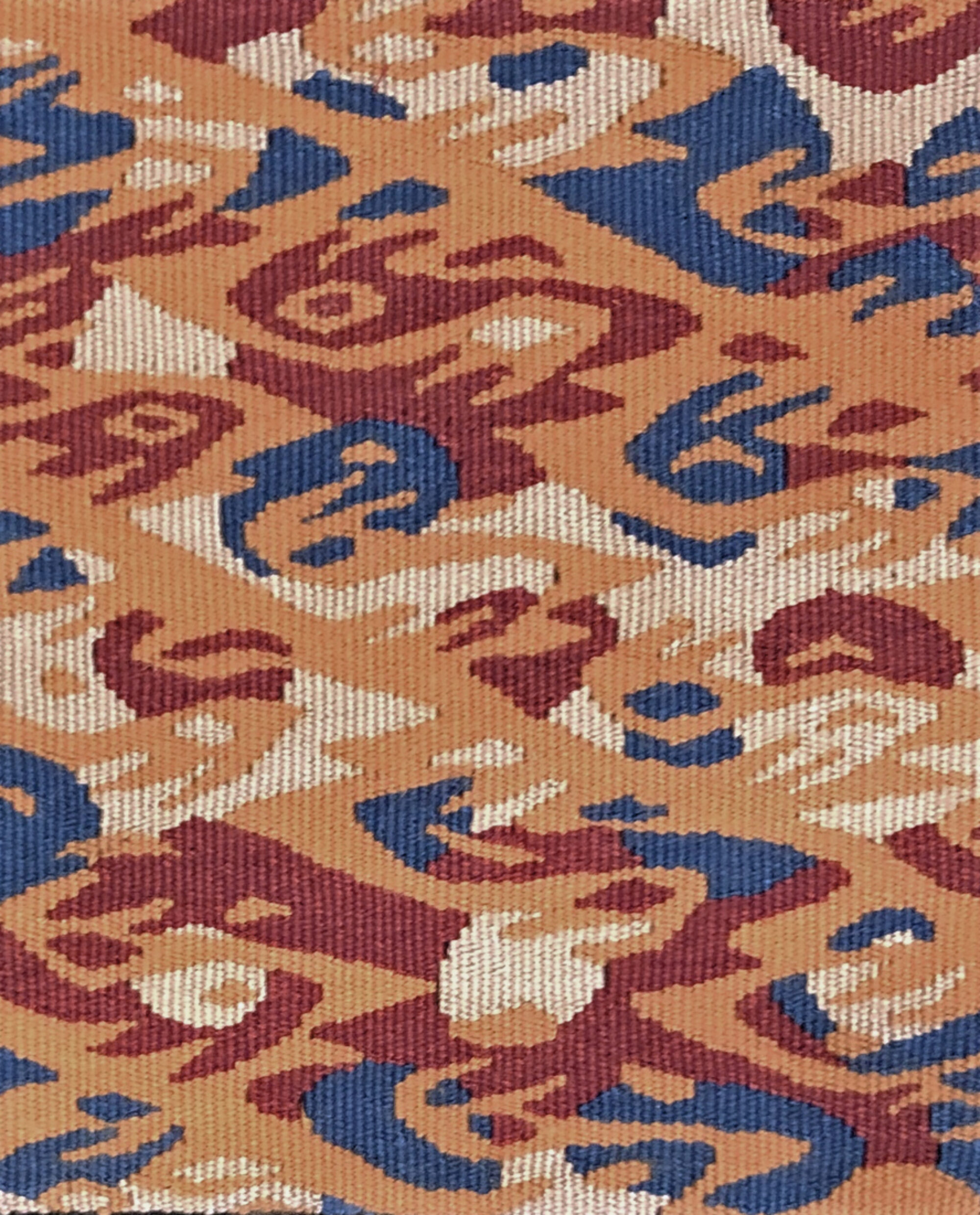These notes date to a visit that Susan Maffei, Archie Brennan and I made to the Ratti Center, the Metropolitan Museum of Art, in November 2004. We were able to look at the back of a few Medieval tapestries that were undergoing conservation at the time. Our perspectives as weavers, combined with the conservators’ close inspection of the tapestries over many months, raised some interesting questions.
Warp / weft balance
The relationship between the diameter of the warp, the size of the weft and the warp spacing has consequences for the surface and drape of a tapestry. The Book of Tapestry (Pierre Verlet, et al.) includes a section entitled Textures – And How to Vary Them (page 203-205) which summarizes the traditional European approach to warp/weft balance, an approach which produces a stiffer fabric suitable for use as a wall hanging, the primary use of tapestry in those cultures. In cultures who have used tapestry as clothing, e.g. Andean, Coptic and Navajo, the warp weft balance is adjusted to produce a softer fabric that drapes more and will thus conform to the shape of the body. In other words, there is not necessarily one “correct” relationship between the warp diameter, weft size and warp spacing. Different relationships produce different fabrics suitable for different uses.
However, there are undesireable consequences of certain warp/weft balances. In tapestry, the objective is to produce a weft faced fabric. For a given warp sett, there is a maximum size (diameter) of the weft (or weft bundle if more than one thread is used in a pass) that can be packed into the warp to cover it completely. This size is approximately the size of the space between the warps. A larger (fatter) weft will either not cover the warp or will push the warp apart (essentially creating a coarser warp sett) in order to cover the warp. In the weaver’s fight to cover the warp and yet not let the warp spread, the surface tends to buckle and the warps push forwards and backwards, creating an irregular surface. The same kind of condition can result from using a warp that is too fat for the warp sett.
Archie was speculating that the kind of surface irregularities that result from an imbalance between the diameter of the warp and weft and the warp spacing, might characterize tapestry at points of change, such as that found in Europe in the late 15th and 16th C when the warp spacing begins to decrease. Perhaps it takes the workshops a while to find the correct warp/weft balance for the new warp spacing.
Cut weft ends versus weft looping on the back
The tendency to either cut the weft ends at the completion of a shape, or to loop the weft to the next place that color is needed might be one of a group of diagnostic tools that could be used to identify: sets of tapestries; techniques specific to a particular workshop; geographic origins; or even time periods. One would probably need to develop a whole constellation of technical attributes that could be used to study a large number of tapestries in order to feel confident about drawing any conclusions. Other technical attributes that might help in sorting out Medieval tapestry include, styles of hachures employed, vertical join methods, the presence of soumak , the presence of eccentric weft and the use of double weft interlock. Of course, there are all sorts of complicating factors, e.g. a tapestry set containing a large number of pieces might have been woven at more than one workshop and/or in different weaving centers in order to complete it in a reasonable amount of time.
Opposing sheds versus sheds always running in the same direction
Whether adjacent colors are woven in opposing sheds or with the sheds running in the same direction could be determined by looking at a tapestry under a microscope. The existence of double weft interlock or looped hachures indicates that the weft in those areas, anyway, is running in the same direction. Meet and separate hachures are woven in opposing sheds.
Weaving from the front / weaving from the back
Looped hachures and double weft interlock are much more easily woven from the back of the loom.
If the weft loops on the back and the loops tend to be mixed up with each other (criss crossed), that might indicate that the weaver was working from the front, since it is hard to keep the threads on the back orderly when one works from the front.
High warp / low warp
Because the harnesses and peddles on a low warp loom control 40 cm worth of warp and because only one person can use a set of peddles at a time, one might expect to find lazy lines around this 40 cm unit if the piece were woven on a low warp loom. (An angled, raking light will show slits better.) The presence of ribbing across a wide expanse might also suggest a harness system since when one uses hand lisses (high warp looms) the amount of warp opened at a time is much smaller. Of course, in most Medieval tapestries there is rarely a large expanse of one color and so finding ribbing across a large width is unlikely.
